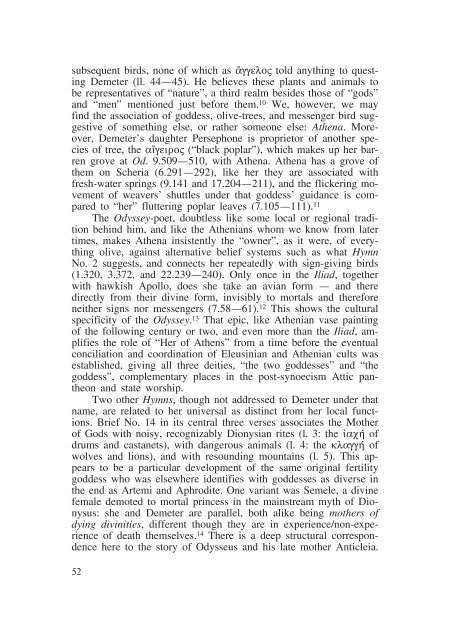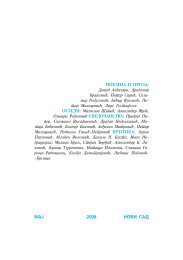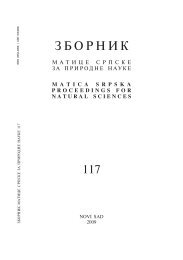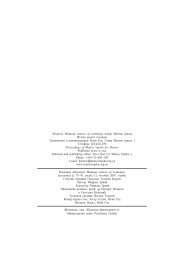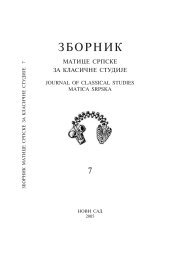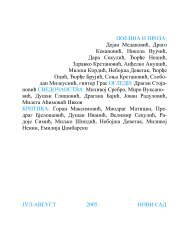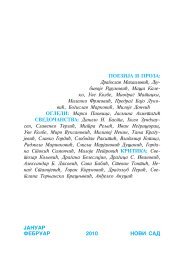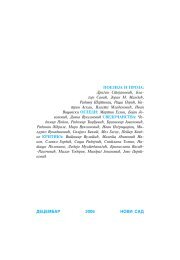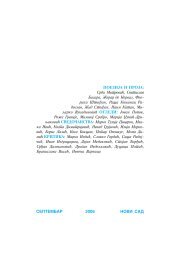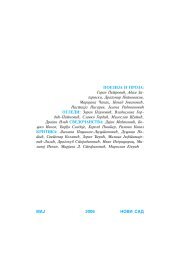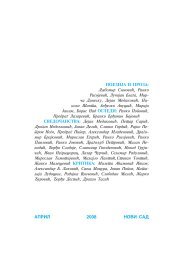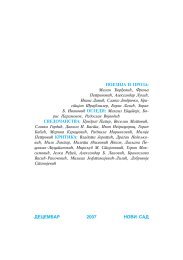Create successful ePaper yourself
Turn your PDF publications into a flip-book with our unique Google optimized e-Paper software.
subsequent birds, none of which as Ëggeloj told anything to questing<br />
Demeter (ll. 44—45). He believes these plants and animals to<br />
be representatives of “nature", a third realm besides those of “gods"<br />
and “men" mentioned just before them. 10 We, however, we may<br />
find the association of goddess, olive-trees, and messenger bird suggestive<br />
of something else, or rather someone else: Athena. Moreover,<br />
Demeter's daughter Persephone is proprietor of another species<br />
of tree, the aÄgeiroj (“black poplar"), which makes up her barren<br />
grove at Od. 9.509—510, with Athena. Athena has a grove of<br />
them on Scheria (6.291—292), like her they are associated with<br />
fresh-water springs (9.141 and 17.204—211), and the flickering movement<br />
of weavers' shuttles under that goddess' guidance is compared<br />
to “her" fluttering poplar leaves (7.105—111). 11<br />
The Odyssey-poet, doubtless like some local or regional tradition<br />
behind him, and like the Athenians whom we know from later<br />
times, makes Athena insistently the “owner", as it were, of everything<br />
olive, against alternative belief systems such as what Hymn<br />
No. 2 suggests, and connects her repeatedly with sign-giving birds<br />
(1.320, 3.372, and 22.239—240). Only once in the Iliad, together<br />
with hawkish Apollo, does she take an avian form — and there<br />
directly from their divine form, invisibly to mortals and therefore<br />
neither signs nor messengers (7.58—61). 12 This shows the cultural<br />
specificity of the Odyssey. 13 That epic, like Athenian vase painting<br />
of the following century or two, and even more than the Iliad, amplifies<br />
the role of “Her of Athens" from a time before the eventual<br />
conciliation and coordination of Eleusinian and Athenian cults was<br />
established, giving all three deities, “the two goddesses" and “the<br />
goddess", complementary places in the post-synoecism Attic pantheon<br />
and state worship.<br />
Two other Hymns, though not addressed to Demeter under that<br />
name, are related to her universal as distinct from her local functions.<br />
Brief No. 14 in its central three verses associates the Mother<br />
of Gods with noisy, recognizably Dionysian rites (l. 3: the øax0 of<br />
drums and castanets), with dangerous animals (l. 4: the klagg0 of<br />
wolves and lions), and with resounding mountains (l. 5). This appears<br />
to be a particular development of the same original fertility<br />
goddess who was elsewhere identifies with goddesses as diverse in<br />
the end as Artemi and Aphrodite. One variant was Semele, a divine<br />
female demoted to mortal princess in the mainstream myth of Dionysus:<br />
she and Demeter are parallel, both alike being mothers of<br />
dying divinities, different though they are in experience/non-experience<br />
of death themselves. 14 There is a deep structural correspondence<br />
here to the story of Odysseus and his late mother Anticleia.<br />
52


